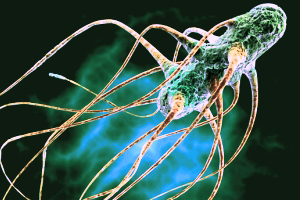Litter aeration and spread of Salmonella in broilers

ABSTRACT: Litter quality in the poultry sector is one of the main parameters of health, productivity, and animal welfare. Therefore, innovative management methods have been developed to improve the quality of litter.
One of them is litter aeration (LA) by tumbling. However, there is little information related to the effect of this technique on the spreading of pathogens of public health importance such as Salmonella. In this context, the objective of this study was to determine the epidemiology of Salmonella in poultry farms, when serial LA were implemented during the rearing cycle of broilers. For this purpose, an experimental broiler farm with 3 identical rooms was used in the study.
Two rooms were assigned to the LA treatment, and the other one served as the control room. Environmental samples were taken in poultry houses after LA in 4 consecutive weeks at the end of the cycle. All samples collected were analyzed according to the standards of the International Organization for Standardization (ISO 6579:2002, Annex D).
The results of this study showed that in the control and treated rooms, the percentage of positive samples for Salmonella decreased in the first 3 LA sessions (LA 1, LA 2, and LA 3). However, in the last LA session of rearing (LA 4), the percentage of positive samples increased from 8.2 to 33.2% in the control room instead the treated rooms where the positive samples decreased (P = 0.017).
Thus, the aeration of the litter as litter management technique in poultry broiler production does not increase the shedding or the spread of Salmonella throughout broiler houses. In addition, it could be an effective technique to reduce the infective pressure of this bacterium in several areas of the farm or in certain moments of the rearing period with more risk of multiplication and spreading of Salmonella.
Authors: Sara González Bodí, Arantxa Villagra Garcia, Santiago Vega García and Clara Marín Orenga













